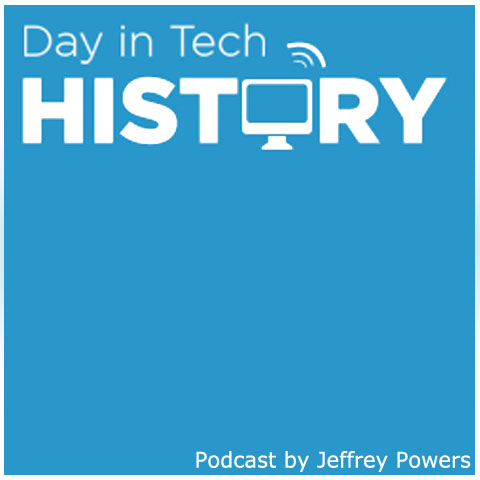February 10, 1992: “Linux is Obsolete” Thread Ends
Subscribe! Spotify | RSS | More

1992 – Comp.os.minix was the location for famous thread “Linux is Dead”. 73 Posts went back and forthe before Bill Mitchell closes it. Andy Tanenbaum (MINIX) started the thread and Linus Torvolds shot back. This is how the thread started out

Subscribe to Day In Tech History:
RSS Feed - iTunes - Android - Spotify - iHeartRadio
Facebook -
- RSS Bandwidth by Cachefly Get a 14 Day Trial
- Join me on Patreon and support Day in Tech History
I was in the U.S. for a couple of weeks, so I haven’t commented much on LINUX (not that I would have said much had I been around), but for what it is worth, I have a couple of comments now.
As most of you know, for me MINIX is a hobby, something that I do in the evening when I get bored writing books and there are no major wars, revolutions, or senate hearings being televised live on CNN. My real job is a professor and researcher in the area of operating systems.
As a result of my occupation, I think I know a bit about where operating are going in the next decade or so. Two aspects stand out:
1. MICROKERNEL VS MONOLITHIC SYSTEM
Most older operating systems are monolithic, that is, the whole operating system is a single a.out file that runs in ‘kernel mode.’ This binary contains the process management, memory management, file system and the rest. Examples of such systems are UNIX, MS-DOS, VMS, MVS, OS/360, MULTICS, and many more.The alternative is a microkernel-based system, in which most of the OS runs as separate processes, mostly outside the kernel. They communicate by message passing. The kernel’s job is to handle the message passing, interrupt handling, low-level process management, and possibly the I/O. Examples of this design are the RC4000, Amoeba, Chorus, Mach, and the not-yet-released Windows/NT.
While I could go into a long story here about the relative merits of the two designs, suffice it to say that among the people who actually design operating systems, the debate is essentially over. Microkernels have won. The only real argument for monolithic systems was performance, and there is now enough evidence showing that microkernel systems can be just as fast as monolithic systems (e.g., Rick Rashid has published papers comparing
Mach 3.0 to monolithic systems) that it is now all over but the shoutin`.MINIX is a microkernel-based system. The file system and memory management are separate processes, running outside the kernel. The I/O drivers are also separate processes (in the kernel, but only because the brain-dead nature of the Intel CPUs makes that difficult to do otherwise). LINUX is a monolithic style system. This is a giant step back into the 1970s. That is like taking an existing, working C program and rewriting it in BASIC. To me, writing a monolithic system in 1991 is a truly poor idea.
2. PORTABILITY
Once upon a time there was the 4004 CPU. When it grew up it became an 8008. Then it underwent plastic surgery and became the 8080. It begat the 8086, which begat the 8088, which begat the 80286, which begat the 80386, which begat the 80486, and so on unto the N-th generation. In the meantime, RISC chips happened, and some of them are running at over 100 MIPS. Speeds of 200 MIPS and more are likely in the coming years. These things are not going to suddenly vanish. What is going to happen is that they will gradually take over from the 80×86 line. They will run old MS-DOS programs by interpreting the 80386 in software. (I even
wrote my own IBM PC simulator in C, which you can get by FTP from ftp.cs.vu.nl = 192.31.231.42 in dir minix/simulator.) I think it is a gross error to design an OS for any specific architecture, since that is not going to be around all that long.MINIX was designed to be reasonably portable, and has been ported from the Intel line to the 680×0 (Atari, Amiga, Macintosh), SPARC, and NS32016. LINUX is tied fairly closely to the 80×86. Not the way to go.
Don`t get me wrong, I am not unhappy with LINUX. It will get all the people who want to turn MINIX in BSD UNIX off my back. But in all honesty, I would suggest that people who want a **MODERN** “free” OS look around for a microkernel-based, portable OS, like maybe GNU or something like that.
Andy Tanenbaum ([email protected])
P.S. Just as a random aside, Amoeba has a UNIX emulator (running in user space), but it is far from complete. If there are any people who would like to work on that, please let me know. To run Amoeba you need a few 386s, one of which needs 16M, and all of which need the WD Ethernet card.





